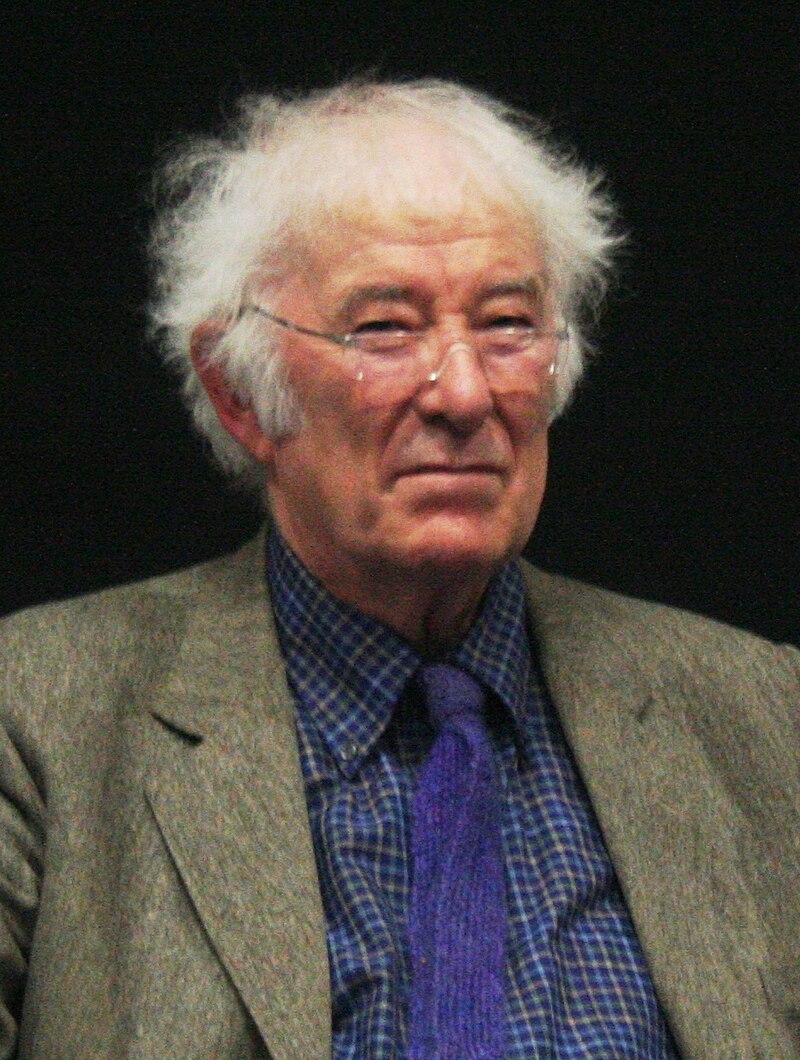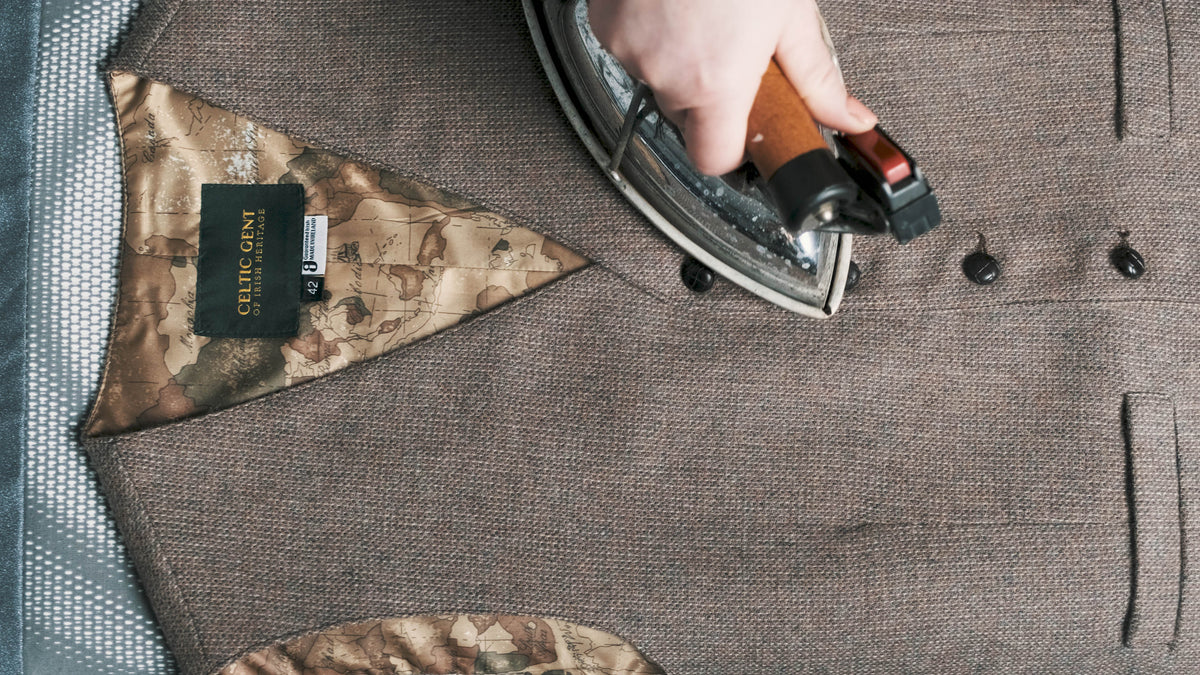
Seamus Heaney – The Art of Timeless Tweed
September 01, 2025
Seamus Heaney – The Texture of Words: Poetry, Craftsmanship & the Art of Timeless Tweed
Seamus Heaney wove language like a craftsman weaves fabric – carefully and meaningfully, with depth and soul. This blog draws parallels between his poetry and the craftsmanship of our Irish tweed, celebrating both as forms of storytelling that last for generations.
A Poet of the People
Seamus Heaney stands as one of the most celebrated poets of the 20th century. Over the course of his remarkable career, Heaney crafted more than 20 powerful volumes of poetry and literary criticism. He was educated at Queen’s University as an English major, resulting in a grown appreciation of artists who created poetry out of their local traditions and native backgrounds. Born and raised in Castledawson, Northern Ireland, the impact of his surroundings greatly contributed to the formation of his poetry. He often used his work to explore the deep emotional and historical currents of the “Troubles” – the violent political struggles that marked his youth. In powerful collections like Wintering Out (1973) and North (1975), Heaney wove Northern Ireland’s unrest into a broad tapestry of human experience. His journey into the world of translation, however, began with the haunting Irish lyric poem Buile Suibhne. The work concerns a tale of a cursed, ancient king turned into a mad, bird-like wanderer, doomed to roam a harsh countryside. Heaney’s lyrical rendering of the epic was published as Sweeney Astray: A Version from the Irish (1984). He would, however, make a lasting mark with his bold and brilliant rendition of the epic Anglo-Saxon poem Beowulf. Heaney’s version of the poem breathed new life into the ancient tale, using fresh, modern language that reenergized the story. His translation was widely hailed as groundbreaking, not just for its poetic power, but for the creative freedom that Heaney took. This chapter of his life would remain for several years, until his publication of Opened Ground: Selected Poems, 1966-1996 (1998). Heaney began to earn true widespread admiration; he was often praised for his depth, craftsmanship, and emotional resonance, and his second collected volume was met with similar acclaim. In Electric Light (2001), Heaney expanded his literary reach even further, drawing on classical voices like Homer while remaining grounded in themes of memory, elegy, and the pastoral tradition. His next volume, District and Circle (2006), earned him the most prestigious poetry award in the United Kingdom – the T.S. Elliot Prize, ultimately cementing his legacy in the world of arts.
Finding Beauty in the Everyday
Seamus Heaney often expressed a deep appreciation for the simplicity and craftsmanship inherent in both language and everyday objects like clothing. Through his words and style of writing, Heaney found a way to serve his own community. He was able to preserve, in literature, its customs and crafts, while also opening the door to a broader literary world beyond it. Heaney’s work continues to leave a powerful mark, offering readers a vivid window into life in Northern Ireland during his time. Similar to his dialect, Heaney conveyed a reverence for everyday objects. He typically mentioned clothing as a symbolic or descriptive device, while highlighting its importance. In his poem Strange Fruit, Heaney makes many different attentive references to appearance and beauty. Although he typically alluded to clothing metaphorically throughout his career, Heaney formed a quiet admiration for dress and what it reveals about identity.
The Role of Textures in Poetry & Fashion
Textiles, much like language, have depth, meaning, and emotion. They are like poems brought to life – created not just from fibers, but from ideas and stories that weave their way through every stitch. The act of creating textiles happens in a slow and intentional manner; just like a story takes shape word by word, fabrics are formed thread by thread. Their formation results in physical and symbolic depth. A single textile holds the techniques of generations and the tactile memory of where it’s been. Likewise, it’s symbolic; a wedding dress, mourning veil, or protest banner carries meaning far beyond its utility. Fabrics have the ability to symbolize identity and express emotion just as language does.
Why Tweed Speaks to the Modern Man
Tweed is beloved for its rare blend of rugged durability, cozy warmth, and timeless charm. Tweed, and other heritage fabrics like linen and cotton, contain the qualities that have allowed them to remain a staple in outerwear for generations. At its core, tweed is a tightly woven wool fabric, crafted from long-staple wool fibers that are spun into yarns. These yarns are then expertly woven into patterns like twill or herringbone, reinforcing its strength and resilience. Functionally, tweed excels when faced with the elements. Naturally moisture-resistant, it can handle light rain while its dense weave offers impressive durability against everyday wear and tear. Today’s tweeds have evolved, however, blending these timeless qualities with modern looks, creating more tailored fits. Here at Celtic Tweed, we strive to continue to evolve, while paying homage to intellects like Seamus Heaney. Our Heaney Grey Slim Fit Tweed Jacket & Blazer is the perfect blend of classic literary inspiration and modern Irish craftsmanship – it’s a piece that honors heritage while remaining confidently modern.
The Comfort of Craftsmanship
Tailored garments, similar to poetry, offer familiarity, nostalgia, and warmth. Poetry often revisits the familiar, becoming a known and comforting rhythm. It offers warmth in the form of emotional honesty and beauty, allowing the reader to sit with feelings in a way that feels safe and sacred. Bespoke garments, like poetry, are carefully crafted to reflect something deeply personal. They become a part of an identity in a way that nothing mass-produced ever could, while offering emotional warmth and physical comfort. These pieces are designed specifically for the customer using care and intention. Beyond their form, both poetry and tailored clothing carry the texture of memory. The nostalgia they evoke becomes intertwined with time, resulting in products that endure.
Dressing for Life’s Verses
Tweed and linen are timeless, tactile fabrics that feel authentic and personal. Tweed is inherently nostalgic; it has a sense of heritage, land, and labor while holding onto shape and memory. Linen, like tweed, is also extremely sentimental. It feels prehistoric, bringing with it the history of its past. Likewise, linen is extremely breathable, adapting to heat and light, ultimately following the body’s lead. The texture allows the fabric to feel effortless and pure, absorbing the rhythm of daily life. Both fabrics carry deep cultural legacies, proving to be key components in Irish history. Tweed has been worn by farmers, aristocrats, and poets, as well as by rebels, revealing its interpretive capabilities. Linen is as ancient as it is modern, remaining in style and useful for generations. At Celtic Tweed, we use these materials as anchors – not just for fashion, but for identity.

Sources:
- https://www.poetryfoundation.org/poets/seamus-heaney Poetry Foundation
- https://sesamepoetry.wordpress.com/tag/strange-fruit/ Strange Fruit poem
- https://www.schooloftextiles.com/podcasts/2019/7/3/the-poetics-of-textiles-with-tim-mclaughlin School of Textiles
- https://yanmaotextile.com/what-is-tweed-fabric/ Yanmao






